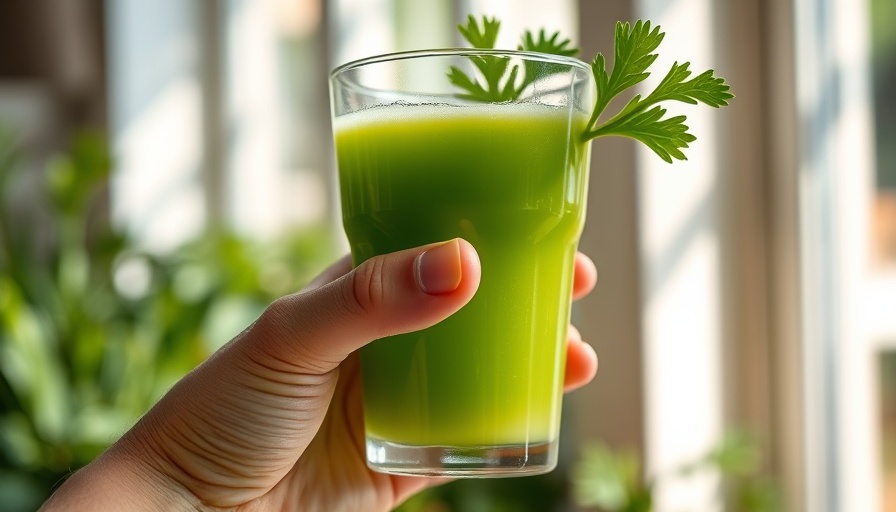
Unlocking the Hidden Benefits of Daily Celery Juice
In a world where health trends come and go, celery juice has recently cemented its status as a superfood, hailed for its numerous potential health benefits. But what truly happens to our bodies when we incorporate this vibrant green juice into our daily regimen? Let’s explore its magical properties and how they align with holistic nutrition goals.
What Makes Celery Juice a Superfood?
Celery juice is not just a trendy addition to your morning routine; it's packed with essential vitamins and minerals. This nutrient-rich drink contains vitamins K, A, and C, as well as potassium and folate. This combination fosters heart health and aids in digestion, making it a fantastic choice for those adhering to a balanced nutrition plan. Additionally, its natural anti-inflammatory properties may help calm inflammation—a key driver of many chronic diseases.
Supports Healthy Eating and Gut Health
Focusing on a whole foods diet, celery juice can act as a functional food contributing to gut health. Its high water content and fiber make it hydrating, which can support digestion, aid bowel movements, and promote overall gut health. With the rise of awareness surrounding plant-based nutrition, integrating celery juice can complement a vibrant lifestyle while working toward optimal well-being.
Packing a Punch in Immune Boosting
Incorporating celery juice into your diet may enhance your immune system. Celery is rich in antioxidants that help fight off free radicals, supporting longevity and overall wellness. For healthcare providers looking for natural health remedies to recommend, celery juice stands out as a simple yet effective way to boost immunity, especially as flu season approaches.
Creating an Anti-Inflammatory Diet
Finally, the incorporation of celery juice aligns beautifully with an anti-inflammatory diet. By regularly consuming celery juice, you can help hinder chronic inflammation, paving the way for a healthier bodily function. For patients or health enthusiasts considering practical insights into dietary choices, this juicing trend can be a valuable addition to foster heart health and a more balanced lifestyle.
Take the Leap!
If you’re curious about how celery juice can enhance your health journey, why not reach out? Call us at 984-238-6164 or email us at tom@mywellnesstrain.com for consultation on incorporating nutrient-rich foods into your daily diet. Whether you're a busy professional or a patient seeking holistic health solutions, we're here to guide you!
 Add Row
Add Row  Add
Add 




Write A Comment